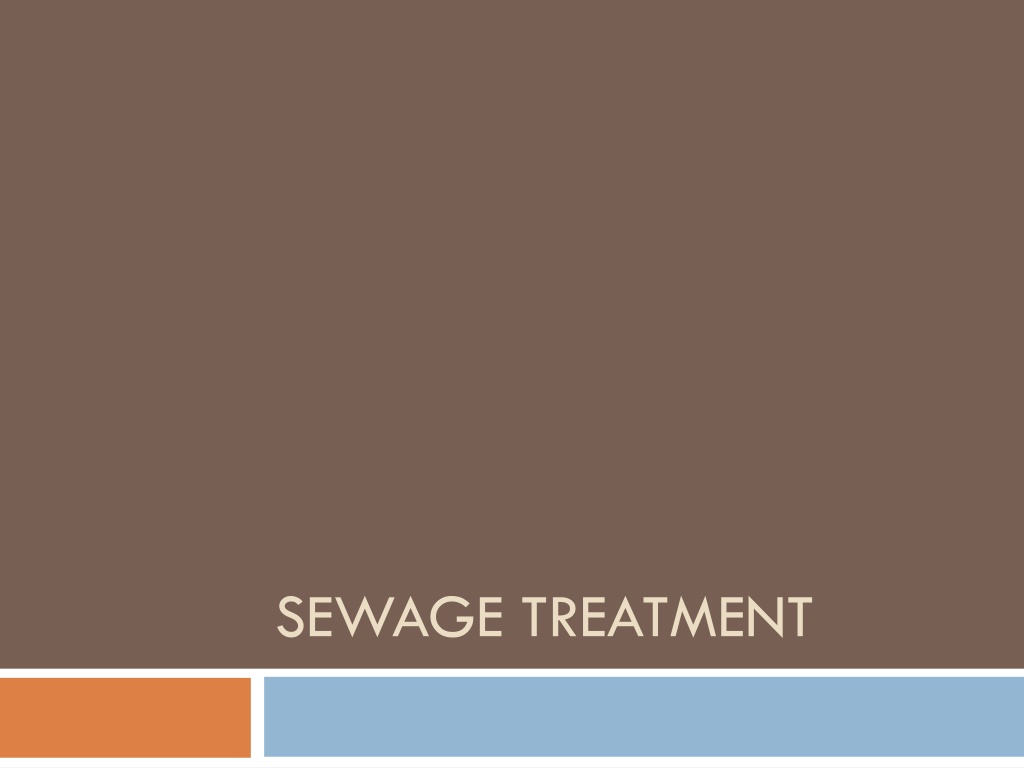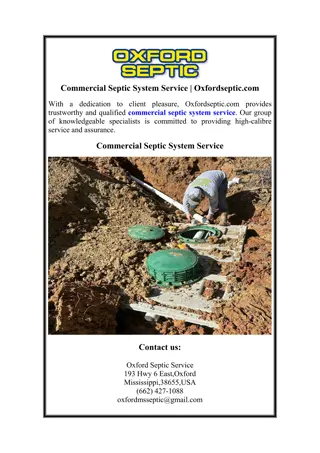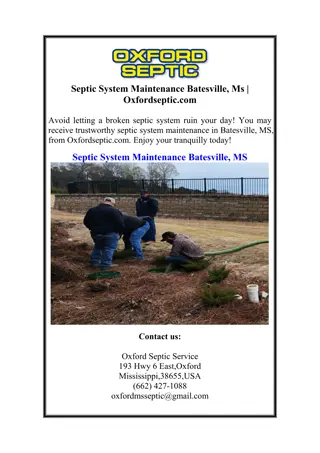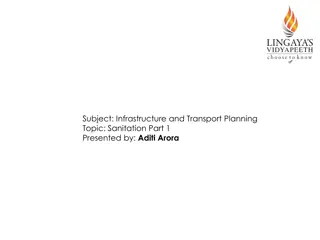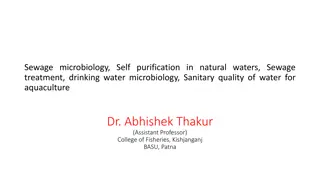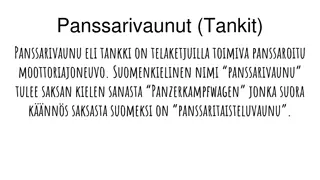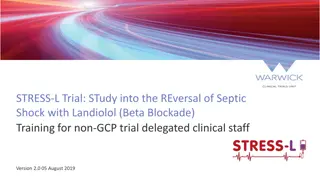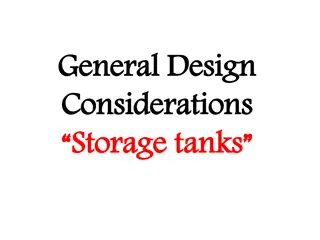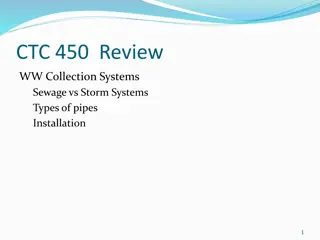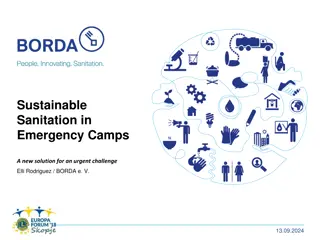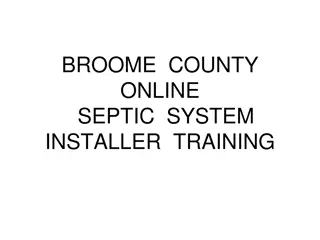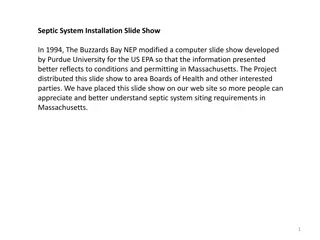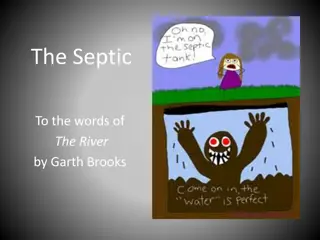Understanding Sewage Treatment Systems and Septic Tanks
Sewage treatment is the process of removing contaminants from wastewater and sewage, involving physical, chemical, and biological processes. Sewage is mainly liquid waste generated by humans, comprising washing water, urine, feces, and more. It can be treated in septic tanks or municipal treatment plants before being discharged or reused. Rural areas often rely on septic tanks, while urban areas have wastewater treatment plants for primary and secondary treatment. Proper maintenance of septic tanks is essential to ensure effective sewage disposal.
Download Presentation

Please find below an Image/Link to download the presentation.
The content on the website is provided AS IS for your information and personal use only. It may not be sold, licensed, or shared on other websites without obtaining consent from the author. Download presentation by click this link. If you encounter any issues during the download, it is possible that the publisher has removed the file from their server.
E N D
Presentation Transcript
Sewage is the mainly liquid waste containing some solids produced by humans, typically consisting of washing water, urine, feces, laundry waste, and other material that goes down drains and toilets from households and industry
Sewage treatment is the process of removing contaminants from wastewater and sewage. It includes physical, chemical and biological processes to remove physical, chemical and biological contaminants. Its objective is to produce a waste stream and a solid waste or sludge suitable for discharge or reuse back into the environment.
Sewage is created by residences, institutions, hospitals and commercial and industrial establishments. It can be treated close to where it is created (in septic tanks), or collected and transported via a network of pipes and pump stations to a municipal treatment plant.
Sewage Treatment Systems Rural and suburban areas septic tank Urban areas wastewater treatment plants Primary treatment physical process Secondary treatment biological process Chlorination bleaching and disinfection
Septic tank common in areas with no connection to main sewage pipes It is 4000 - 7500 litres in size The five parts of a sewage disposal system are: (1) the house plumbing, (2) the sewer line from house to septic tank, (3) the septic tank, (4) the septic tank outlet sewer pipe, (5) the final soil treatment unit, which may be a soil absorption unit
The material in the septic tank separates into three distinct layers: A top layer of floating scum A middle liquid zone A bottom layer of sludge
keep the septic tank and soil absorption unit at least 100 feet away from any private well that is less than 100 feet deep, and at least 50 feet away from wells more than 100 feet deep.
Sewage treatment plant Grit removal Pre-treatment may include a sand or grit channel or chamber where the velocity of the incoming wastewater is adjusted to allow the settlement of sand, grit, and stones
Primary treatment Settle solids for 2-3 hours in a static, unmixed tank, commonly called "primary clarifiers" or "primary sedimentation tanks". The tanks are used to settle sludge while grease and oils rise to the surface and are skimmed off Sludge is directed towards the base of the tank where it is pumped to sludge treatment facilities.
Secondary Treatment Sludge from the sedimentation tanks is digested anaerobically in large tanks, In the sludge digesters the sludge is kept at 37oC and mechanically mixed to ensure optimum operation. When the sludge leaves the digesters it has undergone a 50% volume reduction
Liquids The liquids are either sent directly to open- air oxidation ponds
In the pond, algae use solar energy to produce oxygen from carbon dioxide and water, and bacteria use oxygen to break down the remaining organics to simple molecules such as carbon dioxide and ammonia. The sun also destroys pathogenic bacteria, while the wind ensures even mixing so that all parts of the ponds are aerobic.
After secondary treatment all effluent, both solid and liquid, is sufficiently safe to be released into the environment.
Primary Secondary Chlorine Bar screen Grit chamber Settling tank Aeration tank Settling tank disinfection tank To river, lake, or ocean Sludge Raw sewage from sewers (kills bacteria) Activated sludge Air pump Disposed of in landfill or ocean or applied to cropland, pasture, or rangeland Sludge digester Sludge drying bed Fig. 11-29, p. 255
